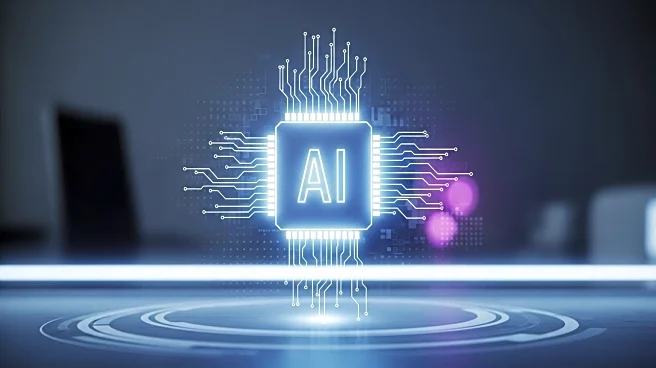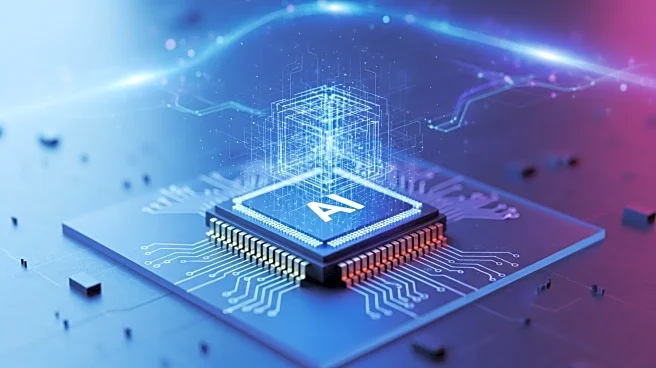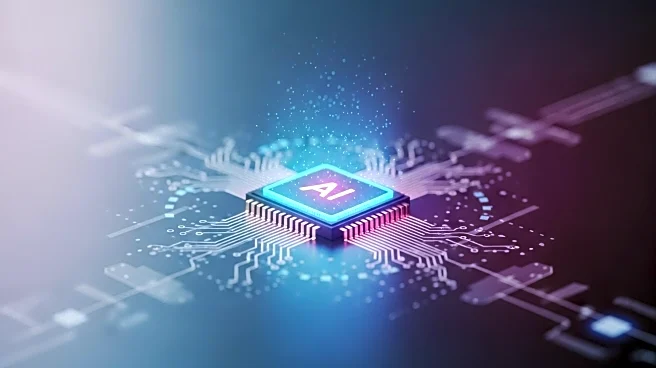What is the story about?
What's Happening?
A recent article from the Financial Times highlights the growing importance of memory chips in the AI revolution, particularly in the context of computer science education. The piece, part of the FT's free schools access program, explores the role of high bandwidth memory (HBM) compared to conventional dynamic random-access memory (DRAM) in AI applications. It discusses the 'memory wall' problem and how HBM's architectural design helps alleviate this issue for developers of large language models. The article also examines the integration of processors into memory stacks, which could significantly alter the traditional relationship between a computer's CPU and its primary memory. The discussion includes insights into the leading companies in the memory chip sector and their strategies for innovation.
Why It's Important?
The focus on memory chips in AI development underscores a shift in technological priorities, where memory performance is increasingly critical for AI inference tasks. This has implications for computer science education, as students must understand the hardware requirements for running AI applications. The article's insights into memory chip innovations provide valuable knowledge for educators and students, preparing them for careers in AI and technology. As memory chips become central to AI advancements, understanding their role and impact is essential for staying competitive in the tech industry.
What's Next?
The emphasis on memory chips in AI development is likely to influence future educational curricula, with schools incorporating more detailed studies of hardware and system performance. This could lead to new teaching materials and case studies that focus on real-world technology scenarios. As the AI industry continues to evolve, educators and students will need to stay informed about emerging technologies and their applications.
Beyond the Headlines
The article highlights the broader implications of memory chip advancements, including potential shifts in industry dynamics and technological innovation. As companies invest in memory chip technologies, there may be changes in market competition and business strategies. Additionally, the integration of processors into memory stacks could lead to new computing architectures, influencing how software and hardware interact.
AI Generated Content
Do you find this article useful?













